Matveev Valery Alexandrovich
1939, Oryol
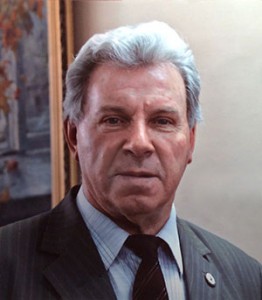 Leading Russian scientist, Doctor of Engineering Science, Doctor of Philosophy, professor. Fine arts expert, collector, patron of the arts.
Leading Russian scientist, Doctor of Engineering Science, Doctor of Philosophy, professor. Fine arts expert, collector, patron of the arts.
In 1961 graduated Mechanical and Technological Department of Tula Mechanical Institute, with honors. In 1961-1964 worked as an assistant, then as a senior tutor of ‘Gyroscopic instruments and devices’ department (GID). In 1962 started postgraduate studies at the Moscow Higher Technical College named after N.E.Bauman, upon completion defended a Phd thesis, theme: ‘Gyroscopes and navigation systems’ (1989). Since 1990 – professor of Moscow State Technical University named after N.E. Bauman. Currently – Head of Scientific-Educational Complex ‘Informatics and Management Systems’ (SEC IMС) of the Bauman MSTU, Dean of the Informatics and Management Systems Department.
Honoured Science Worker of the Russian Federation (2000), Winner of the State Prize of the USSR (for design of dynamically adjusted gyroscopes) (1987), Winner of the State Prize of the Russian Federation (2003), Winner of the Prize of the Government of Moscow city, fellow, Academy of Navigation and Motion Control.
Awarded with Medals of Honour: ‘For Clearing of Virgin and Fallow Lands’, ‘For Labour Valour’, ‘850th Anniversary of Moscow’, ‘Labour Veteran’; with Service Medals: named after Academician N.A. Pilyugin, after Academician V.I. Kuznetsov, ’50 Years of Outer Space Exploration’, Golden Medal of Exhibition of Economic Achievements of the USSR.
The author of more than 140 scientific works, including 5 books in the field of classic and new applies theory of gyroscopic devices and systems, inertial navigation, mechanics.
Along with scientific work and professorship he devoted much time and energy to the History of Arts and collecting. He was the Chief Editor of ‘Antiquar’ newspaper and the first President of the Union of Antiquarians of Russia (1991-1993), Director of ‘Antip’ Art Gallery. Organizer of the arts exhibitions. Author of the art history articles. Screenplay writer and director of documentary film ‘The artist A.D. Tikhomirov’ (camera man A. Lushchikov, 2000). Over a number of years donated many of the works from his collection to Orlov Art Museum.
Met Alexander Dmitrievich Tikhomirov in 1978, was friends with the artist and his family.
Made an invaluable contribution to investigation about the life and the art of the painter. Was the first one to compile his chronological biography and identify the periods of his creative development.
It is due to V.A. Matveev’s efforts Tikhomirov’s paintings and graphics have been discovered by the viewing audience.
V.A. Matveev has organized the first personal exhibition of the artist in Orlov Art Gallery (1987), personal exhibitions at ‘Antip’ gallery in the Central House of Writers (1993), at the Bauman MSTU (2004). Together with the artist’s daughter, Anna Alexandrovna Tikhomirova, was involved in preparation of postmortem exhibitions of paintings and graphics of A.D. Tikhomirov at the Central House of Artists (1999, 2002), including the ‘Circus’ exhibition devoted to Y. Nikulin, in preparation to the exhibition at ‘Storozh’ studio (2002). Contributed to organization of personal exhibition of A.D. Tikhomirov’s paintings and graphics at ‘Novy Hermitage’ gallery (2008).
Selected scientific works
- D.S. Pel’por, V.A. Matveev, V.D. Arsenyev. Dynamically adjusted gyroscopes. Moscow, Mashinostroyeniye, 1988.
- Gyroscopic systems. Gyroscopic devices and systems / D.S. Pel’por, I.A. Mikhalev, V.A. Bauman, V.A. Matveev, V.V. Yagodkin, S.F. Konovalov. Moscow, Vysshaya shkola, 1988.
- V.A. Matveev, V.I. Lipatnikov, A.V. Alyokhin. Projecting of the gyroscope based on elastic waves in solids. Moscow, editing house of the MSTU named after N.E. Bauman, 1997.
- M.A. Basarab, V.F. Kravchenko, V.A. Matveev. Mathematic modeling of physical processes in gyroscopy. Moscow, Radiotechnika, 2005.
- M.A. Basarab, V.F. Kravchenko, V.A. Matveev. Methods of modeling and digital processing of signals in gyroscopy. Moscow, Phizmatlit, 2008.
- V.A. Matveev, B.S. Lunin, M.A. Basarab. Navigation systems on gyroscopes based on elastic waves in solids. Moscow, Phizmatlit, 2008.
Publications about A.D. Tikhomirov
- Autobiography compiled by the artist on 20.05.1986 upon request of Orlov Art Gallery of Oryol Regional Arts Museum
- V.A. Matveev. Theatric characters of A.D. Tikhomirov. Typewriting. Oryol Regional Arts Museum
- V.A. Matveev. Alexander Tikhomirov, the artist. Artcouncil. 2006. #6 [52]
Text of the article contains information from the book ‘Bequeathed to Oryol. Dictionary of donors’. (Oryol Art Museum, 2001 – 2005) and from the following web-sites: wikipedia.org, gyroscope-v.narod.ru/history/1/Matveev.V.A.htm, www.bmstu.ru/mstu/info/faculty/iu
Heirs of the artist thank Valery Alexandrovich Matveev for sharing his archive materials, memories about life and art of the painter, contribution to exhibitions, interviews on various TV channels and his overall support.
Gordon Grigory Borisovich
1936, Moscow
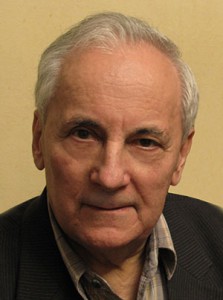 Russian piano player, professor of the Russian Music Academy (RAM) named after Gnesins (special piano department). Student of E.V. Mazharova, V.V. Listova (among her students are E. Grossman, S. Neighaus, A. Eshpai), G.G. Heighaus.
Russian piano player, professor of the Russian Music Academy (RAM) named after Gnesins (special piano department). Student of E.V. Mazharova, V.V. Listova (among her students are E. Grossman, S. Neighaus, A. Eshpai), G.G. Heighaus.
Winner of the II award at the Moscow Youth Festival (1956).
For many years he has been giving concerts throughout the country and abroad, however, considers his professorship as the main direction of work. He brought up hundreds of young pianists, including the winners of the international contests.
Wrote musicological articles, memories about the musicians, books “Emil Gilels. Behind th myth” (Moscow, Klassika – XXI, 2007), “Emil Gigels and others” (Yekaterinburg, 2010).
Met with A.D. Tikhomirov in 1975. Over long years their families have been in close friendship. Since 1979 Tikhomirovs and Gordons spent summer months together in Svistukha village nearby Moscow, on the shore of Yakhromskoye water reservoir.
G.B. Gordon introduced the artist Boris Otarov and the composer Oleg Eiges, who admired Tikhomirov’s art, to Alexander Dmitrievich.
The text is comprised using information from the web-site www.lidsky.ru and materials from A.D. Tikhomirov’s archive.
Heirs of the artist would like to thank Grigory Borisovich Gordon for his memories about life and art of A.D. Tikhomirov, interviews on TV channels and his uninterrupted support.
Alexander Braginsky
1942, Moscow
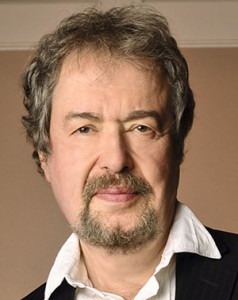 Pianist, Professor of Piano Pedagogy at the University of Minnesota (USA), Director of the International Institute of Piano Pedagogy, Founder and Artistic Director of the international Minnesota contest, the International Piano-e Competition.
Pianist, Professor of Piano Pedagogy at the University of Minnesota (USA), Director of the International Institute of Piano Pedagogy, Founder and Artistic Director of the international Minnesota contest, the International Piano-e Competition.
The first person to give him piano lessons was his mother, a well-known concert pianist. From the age of six, he began studying under A. Goldenweiser, a close friend of Leo Tolstoy and classmate of S. Pakhmanin and A. Skriabin. Thanks to Goldenweiser, under whom he studied for twelve years as his youngest student, Braginsky was introduced to the great Romantic tradition of the 19th century. After the death of A. Goldenweiser he continued to study with T. Gutman, another exceptional representative of the “Golden Age” of the Russian school of piano. He completed his piano studies at the Moscow Conservatory in 1966. He immigrated to the USA in 1971.
Braginsky’s repertoire covers a wide range of compositions – from Baroque to avant-garde. He has taken part in over twenty world premieres, actively performed in the former USSR, Israel, England, Belgium, Italy, Germany, Taiwan, China, Spain, France, Cuba and the USA. He has performed onstage together with Yefim Bronfman, Oleg Kagan and other well-known artists.
Braginsky has recorded music for the DDF, Sound StarTone and d’Note labels. His performances were often broadcast on the BBC, National Public Radio, WQXR, WFMT, RTB-BRT and other leading world radio stations.
Braginsky has held master classes in Europe, Asia and North America, performed at an International Music Summer Course in Vienna (Austria, 1995). In 2003, in Vienna, A. Braginsky was awarded the Josef Dichler Gold Medal.
At present, A. Braginsky teaches piano at the University of Minnesota (USA), is the director of the International Institute of Piano at the University of San Paulo. Many of his students are laureates of national and international competitions.
Adlivankin Samuil Yakovlevich
1897, Tatarskoye, Mogilyovsky yezd – 1966, Moscow
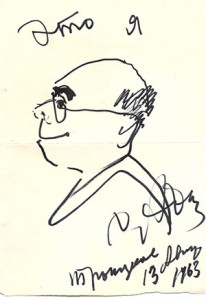 Painter, master of lyric landscape, great portraitist, author of works on historical-revolutionary and domestic themes, monumental panel-paintings, book graphics. Typical representative of post-revolutionary generation of Russian vanguard artists.
Painter, master of lyric landscape, great portraitist, author of works on historical-revolutionary and domestic themes, monumental panel-paintings, book graphics. Typical representative of post-revolutionary generation of Russian vanguard artists.
On the threshold of XIX–XX centuries he worked on paintings and graphic works combining the principles of cubic futurism and constructivism. Non-figurative art has just been a small episode in his art. Along with easel painting he worked on magazine and newspaper graphics (prevailed in 1920s, mainly in the form of satiric graphics on the themes of NEP (New Economic Policy)). At the end of 1920-30s worked as a book artist. One of the brightest representatives of NOZh (New Society of the Artists).
S.Y. Adlivankin graduated from Mogilyov private gymnasium. In 1912 moved to Odessa together with his parents, till 1917 studied at Odessa Art College under supervision of K.K. Kostandi, D. Lekhtman-Zaslavskaya, G. Miller, D. Zagoskin. Qualified as an art teacher. In 1916 made debut at the exhibition of “The Independent” with participation of “left” youth. In 1918 moved to Moscow. Practiced in GSKhM (State Independent Art Studious) and later on in VKhuTEMAS (Higher Art and Technical Studios) under supervision og V.E. Tatlin. In 1919 have been mobilized into the army and referred to Buzulun city. Decorated the Krasnoarmeysky Club with a cubic-style painting. Organized a crew of artists working in the field of propaganda-decorative art. Supervised the studio under the Moscow Independent Art Studios programme. In 1919 – in charge of establishment of Higher Art Studios in Samara. Was acquainted with G.G. Ryazhsky.
Since 1920 worked at Narcompros (People’s Commissariat of Education), headed by supporters of formalism, together with Y. Bondi, F. Platov, I Iznar and the stage director G. Roshal. In 1920s created a number of paintings providing a humoristic depiction of NEP in the manner of “ironic primitivism”, typical for this establishment. Having returned to Moscow, lived in Ilyinskoye village nearby Moscow. Taught drawing and art at the colony for street children in Malakhovka village, at the same time when M. Shagal has been a tutor there. In 1921 was among the founders of the “New Society of the Artists” (NOZh) in Moscow, first and the only exhibition of which took place in 1922. S.Y. Adlivankin’s painting “Tram B” may be considered a trademark of the union.
Over three years starting in 1923, worked with V. Mayakovsky drawing propaganda posters and soviet advertisements. Cooperated with “Krasnaya Zvesda” and “Krestyanskaya Zastava” newspapers, “30 dney”, “Krasnaya Niva”, “Krasnoarmeets”, “Bezbozhnik” and “Krokodil” magazines, Detgiz, “Molodaya Gvardiya”, AKhKhR and Izogiz publishing houses. Was regularly involved into film production, contributed to creation of “Cup of Tea” movie (Soyuzdetfilm, 1927).
In 1928 moved to Tomilino village nearby Moscow together with his family. Started working in a manner of easel painting. At the beginning of 1930s became close with former members of OST who have later on formed “Izobrigade”, was the leading artist of the society. Since 1932 – member of MOSKh (Moscow Regional Union of Artists). In 1933–1935 – undertook creative assignments to Feodosia, Bashkiriya, Urals, Kuzbass and Donbass. In 1937–1938 worked on the panel paintings “Northern Caucasus” and “Far East” at the VDNKh (Exhibition of Economic Achievements). In 1942 was evacuated to Sverdlovsk, worked at “Agitplakat”.
Was a friend with E.A. Kibrik, A.A. Deineka, Y.I. Pimenov, was acquainted with E.D. Simkin, A.A. Labas. Was friends with A.D. Tikhomirov since 1960s. S.Y. Adlivankin’s works are stored at State Tretyakov Gallery, State Russian Museum, etc.
The article is written using the materials of the following books: “Unknown Russian avant-garde” (Moscow, Sovetsky Khudozhnik, 1992), “Fine art of 20-30s” (Saint-Petersburg, Khudozhnik RSFSR, 1991); web-site www.sovcom.ru, and archives of the family of the artist S.Y. Adlivankin.
Gluskin Alexander Mikhailovich
1899, Odessa – 1965, Moscow
Painter, great colorist, one of the best representatives of Moscow painting school. Painted in traditions of South-Russian painting school. In 1918-21 studied in Odessa Art College, student of K. Kostandy and Y. Bershadsky. In 1919 made a debut at the ‘First national exhibition’ in Odessa. Since the end of 1920 lived in Moscow. In 1920-es was close to creative search of the Russian avant-garde. Was in close relations with young writers – E. Bagritsky, Y. Olesha, I. Ilf and I. Babel.
Since 1925 – founding member of N.A.S. (New Artists Society) and ‘Bytiye’ societies. In their statement N.A.S. artists announced the end of ‘analytical period’ in art and characterized realism as ‘not an impersonal, ceremonial depiction of life, but its creative revaluation, deep personal attitude to it’.
Since 1931 – member of the Russian Artists Association. Knowledge of various art movements, new French pictorial art in particular, identified Gluskin’s aspiration for the art of intricate graphic visualization. Special chapter in Gluskin’s art is devoted to his involvement in ‘YugROST windows’ project. Participated in various all-Union art exhibitions. His personal exhibitions were held in Moscow in 1955 and 1968.
In 1950-70-es taught at the Moscow Art School on Kropotkinskaya. He passed on the pictorial art traditions of ‘the Paris school’ and the Russian Cézannists. His works are stored at the State Tretyakov Gallery, State Russian Museum, at the regional museums of the former USSR and in private collections in Russia and abroad.
Text of the article contains information from the following web-sites:
www.sbmgallery.ru, www.sovcom.ru
Simkin Ephim Davydovich
1915, Kiev – 2001, Moscow
Studied at Moscow Art College named in the memory of 1905 (1938 – 1940), student of L.Y. Kramarenko.
In 1947 graduated from Moscow State Institute in the class of A.A. Osmyorkin, P.I. Kotov. Has also been a student of N.Kh. Maximov, D.K. Mochalsky.
During the Great Patriotic War served in the rank of a sergeant in 226th rifle division by Stalingrad, was a gunner of the antitank rifle. Awarded with the Order of the Patriotic War of the 1st Class, the Order of Glory of the 3rd Class, the Medals ‘For Protection of Stalingrad’, ‘For Conquering Germany in the Great Partiotic War in 1941-1945’, and others.
Participant of the art exhibitions and the member of the Union of Artists of the USSR since 1949. Main themes of his drawing are devoted to the Great Patriotic War and the childhood.
A number of portraits, genre compositions and landscapes are painted under impressions from his trips to Astrakhan, Kiev, Riga, Gurzuf.
Awards and diplomas of the Moscow Department of the Union of Artists of the Russian Soviet Federative Socialist Republic, Moscow City Organization of the Art Foundation of the Russian Soviet Federative Socialist Republic. Personal exhibition took place in Moscow in 1980. Works of the artist are stored at the State Tretyakov Gallery, museums of Pavlodar, Lodeynoye pole and other cities.
Text of the article contains information from the following sources: www.artgallery.krasno.ru;
booklet of the exhibition ‘The artists of Moscow. E.D. Simkin’ (Moscow, Sovetsky khudozhnik, 1986), and also the materials from the archives of A.D. Tikhomirov
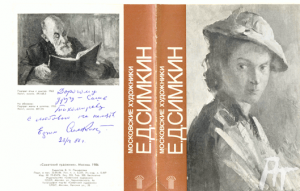 |
| Booklet of the exhibition ‘The artists of Moscow. E.D. Simkin’ with presentation inscription (from the archives of A.D. Tikhomirov) |
Alexander Mikhailovich Malkin
1913, Vetka – 2002, Moscow
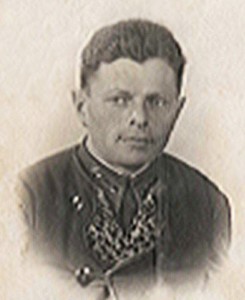 Artist, portraitist, genre-painter. Member of the USSR Union of Artists.
Artist, portraitist, genre-painter. Member of the USSR Union of Artists.
In the years of the Second World War, he served in the airborne military forces and commanded the anti-tank battery. He was a part of the Battle of Stalingrad, Captain of the Guards, was awarded medals “For the victory over Germany in the Great Patriotic War of 1941-1945” and “For the Defence of Stalingrad”. In 1957, he took part in expositions. In 1958, was received into the USSR Union of Artists. He was awarded the diploma. His main works are: “Students from Altai”, 1950; “Morning”, 1957; “Spring”, 1960; “An Azovstal Steelmaker”, 1962; “V. I. Lenin and N. K. Krupskaya”, 1965; and “John Reed”, 1967.
Labas Alexander Arkadyevich
1900, Smolensk – 1983, Moscow
The artist, representative of expressionism, one of the founders of the Society of Easel Painters (SEP) and one of the most original painters in the SEP circles. In 1912–1917 studied at Stroganov Art and Industrial College, was a student of F.F. Fedorovsky. At the same time studied at the workshop of F. Redberg. During the last years of his studies attended the studio of I.I. Mashkov (1916) and the workshop of P.P. Konchalovsky at Free Art Workshops (1917) (hereinafter Higher Arts and Industrial Workshops, HAIW). Was a student of K. Malevich, V. Kandinsky, P. Kuznetsov, K. Istomin. In 1919 — the artist of the 3rd Army of the Eastern Front.
In 1921–1924 studied in HAIW. At the beginning of 1920-es decorated the scenery for performances of the State Jewish Theatre (SJT) in Moscow, where R. Fahlk was working as well. Since 1924, upon invitation of V. Favorsky, started teaching pictorial art and color science at the HAIW.
1920-е – 1930-es were times of experiments with non-figurative art and constructivism for the artist. He has been taking an active part in the international exhibitions. Works of A.A. Labas are displayed at the Soviet Art exhibition in New-York. The theme of his pictures is nature conquered by a man and transformed by his work.
In 1935-1936 he was accused of formalism, his works were not accepted for any exhibitions and none of the museums wanted to buy them. And only since 1966 the artist’s creations could be re-discovered by the public.
The works of A.A. Labas are atored at the State Tretyakov Gallery (Moscow), the Pushkin State Museum of Fine Arts (Moscow), State Russian Museum (Saint-Petersburg), Museum of Fine Arts (Ekaterinburg), Museum of Modern Art in Dmitrovskaya street (Rostov-on-Don), in private collections in Russia and abroad.
His wife is a poet and an artist Raisa Veniaminovna Idelson (1894–1972, previously married to R.R. Fahlk).
Text of the article contains information from the following web-sites: www.sovcom.ru, www.ru.wikipedia.org
Drize Isaak Davidovich
1909, Pochep town of Bryansk province – 2010, Moscow
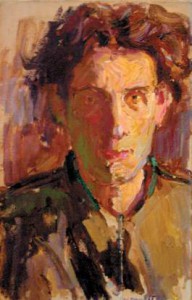 Portrayer, master of lyric landscape. Successor of impressionistic traditions of the ‘Jack of diamonds’.
Portrayer, master of lyric landscape. Successor of impressionistic traditions of the ‘Jack of diamonds’.
Studied at the Moscow Art and Industrial College (1927-1931), in Leningrad at the Institute of Pictorial Art, Sculpture and Arkhitecture (IPASA) named after I.A. Repin (beginning of 1930-es), at the Institution of Advanced Training under the Moscow Art Institute (1936-1939), was a student of B.G. Iogansona, K.F. Yuona and L. Kramarenko. After the war and at the beginning of 1950-es attended the workshop of R.R. Falk. Worked at the Central Aero-Hydrodynamics Institute and at the Pictorial Art Concern in Moscow. Participated in all-Union exhibitions and exhibitions of the Moscow Department of the Union of Artists. Member of the Union of Artists since 1959.
Throughout his life, he painted hundreds of portraits of his contemporaries, among them – aircraft designers, old Bolsheviks, Heroes of Socialist Labor. Created thematic pictures, but is more known as an outstanding landscape artist and a still-life master. However, being among the artists neglected by the official art, he didn’t have a single personal exhibition. Joint exhibition of works of A.F. Sofronova and I.D. Drize took place at the Central House of Artists (Moscow) in 2005.
The works of the artist are stored at the Scientific-Memorial Museum named after N.E. Zhukovsky and in private collections in Russia and abroad (France, USA, Israel, Korea).
Text of the article contains information from the following web-sites: www.sovcom.ru, www.portret.ru, www.museum.ru.
Alexander Ivanovich Sakhanov
1915, Merv (from 1937, Mari) – 1988, Moscow
Artist, pedagogue, member of the Union of Soviet Artists. Honoured Artist of the RSFSR, famous creator of Lenin propaganda, student of S. Gerasimov, I. Grabar, and V. Baksheev.
In 1934, Alexander Sakhanov enrolled into the Baku Art School. Having completed his studies with excellence in 1937, he moved to Moscow and, in 1938, enrolled into the V. I. Surikov Moscow State Academic Art Institute. He participated in the Second World War, was awarded a medal for “Courage”, “For the Defence of the Caucasus”, and “For the Victory over Germany”. After the war, he continued his studies at the Surikov institute and graduated in 1949. That same year, he began teaching art at the Moscow Academic Art College (commemorated to the events of 1905), and, from 1950, was the appointed Director of the College (until 1966). In 1956, he entered into the Moscow Union of Soviet Artists. He painted thematic, genre scenes, landscapes and portraits. From 1944, he took part in art exhibitions, and was exhibited in a group exposition in Moscow in 1956. In 1962, he was awarded the title of “Honoured Artist of the RSFSR”.
The artist’s main works are: “Thoughts, My Thoughts (Taras Shevchenko)” (1957), “Ilyich” (1959), “V. I. Lenin on a Hunt” (1964), “Builders” (1964), “In Gorki” (1967), “Construction Workers. Brigadier Vasily Taruntaev” (1967), “Ossetia. Lead-Slate Mine” (1975).
Peredny Alexander Nikolaevich
1958–1993
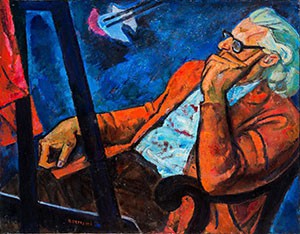 The Moscow artist. Painted landscapes, still lives, portraits.
The Moscow artist. Painted landscapes, still lives, portraits.
Was born in the family of the artist N. Peredny. Started drawing from early childhood, however, did not receive any professional education apart from the art school for children (MSHSh). In 1979 at the age of 21 has been accepted into the art section of the Moscow Department of the Union of Artists as a working painter and became the youngest member of the union. Was acquainted with A.D. Tikhomirov, drew his portraits.
The text is comprised using information from the web-site www.museum.ru and materials from the archive of A.D. Tikhomirov.
Boris Sergeevich Otarov
1916, Tbilisi – 1991, Moscow
Painter, graphic artist, worked in abstract manner, significant place in his art belongs to works done in mixed technique using such materials as metal, glass, wood, mastic. Representative of the Moscow “underground”.
Spent his childhood in Georgia. In 1926 moved with his parents to Moscow, then the father of Otarov has been referred to Germany, from where the family returned to USSR in 1932. Always dreamt of becoming an artist, but his father was totally against that. Graduated Physics Faculty of Moscow State University. In 1941 voluntarily recruited into the army, served as an officer in operating units of the Soviet Army, participated in the most severe battles by Kalinin city, Stalingrad, in liberation of Ukraine, Moldova, Bulgaria and Yugoslavia. Met the end of war in Vienna. After the war, for more than 20 years since 1946 was engaged in scientific work and was a tutor at Moscow Energy Institute, contributed to development of the first synchrophasotron in the USSR.
In 1950 studied fine arts under supervision of P. Sokolov-Scali and A. Kuprin, one of the founders of the “Jack of Diamonds” in the past. Regularly studied at various art studios, kept in touch with P. Konchalovsky, M. Saryan, V. Veisberg and V. Bubnova, which defined his further life. In 1953 parted with physics for good and fully devoted himself to the arts. In 1960-1991 was working as consulting artist first at the Distance Learning People’s Univercity of Arts (ZNUI), then at the All-Union People’s Academy of Arts. Got acquainted with A.D. Tikhomirov at the end of 1970s through G.B. Gordon.
B.S. Otarov’s works are stored at the art galleries and private collections in Russia, France, Sweden, Germany, England, USA, Japan, Finland, Austria, Estonia, Armenia and other countries.
The article is written using the materials from web-sites: www.rusiskusstvo , www.art9.ru , memories of L.A. Otarova and N. Brykina’s article from “Life is a miracle” book www.brykina.com
Ilyin Iosif Mikhailovich
1915, Mogilyov – 1990, Moscow
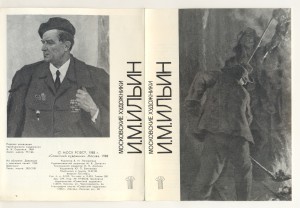 Portrayer, the author of thematic paintings. Studied at the art workshops in Inanovo (1935-1937) and in Kiev (1937-1939). During the Great Patriotic War served at 254th rifle division, with which he went through entire war.
Portrayer, the author of thematic paintings. Studied at the art workshops in Inanovo (1935-1937) and in Kiev (1937-1939). During the Great Patriotic War served at 254th rifle division, with which he went through entire war.
In 1950-1953 studied in Moscow, was a student of G.G. Korolyov. Worked as a layout artist. Created paintings about the war, including the portraits of his fellow soldiers, soldiers of the 11th tank corps which went all the way from Moscow to Berlin, heroes of guerrilla movement, as well as war sceneries. Personal exhibitions of his works took place in Moscow in 1963, 1968, 1969, 1972. Pictures of the artist are stored in many private collections.
Text of the article contains information from the following sources: www.sovcom.ru and materials from the archive of A.D. Tikhomirov.
Boris Anisimovich Pinkhasovich
1910, Pochep – 1993, Moscow
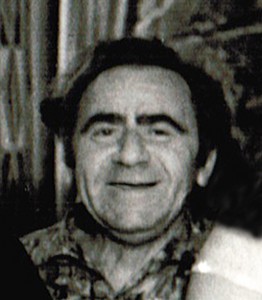 Artist, monumentalist, portraitist. Member of the USSR Union of Artists.
Artist, monumentalist, portraitist. Member of the USSR Union of Artists.
Completed his studies at the Vkhutemas. Studied under Robert Falk, as well as D. N. Kardovsky, I. I. Mashkov, and K. N. Istomin. Creator of the “cult of Lenin”, painter of custom portraits, these including the ceremonial portrait of Marshal G. K. Zhukov. For many years, he took part in the festive decoration of Moscow, created propaganda posters and portraits of political activists.
Kotlikov Rudolf Borisovich
1933, Moscow
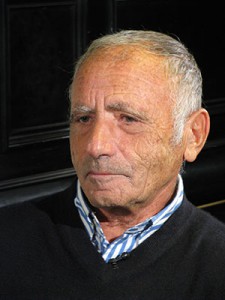 Writer, phot-journalist, painter.
Writer, phot-journalist, painter.
Born in Moscow. In 1955 graduated from the School of Cinema and Photo Documentarians under the Central House of Journalists. From 1960-s worked as photo-journalist at the Agency of Politic News, in 1978 emigrated to the USA.
Author of the following prose: “Lumps. Stories” (Chicago, Paris, 1989), “Parables. Comments” (Moscow, 2007). Contributed to collection of stories “Perestroika times” (Chicago, 1993) published in 1993. His works have been published in such magazines as “Ulitsa”, “Reflect”, “Chernovik”, “Den i Noch”, “Samvatas”, etc.
Participated in photo-exhibitions held in Moscow and California. As an artist works in the manner of satiric expressionism. Multiple Weight Lifting Champion of the USA (in his age group).
Was closely acquainted with A.D. Tikhomirov since the 1940-s.
The text has been comprised using information from the web-sites www.biogr.ru, www.polutona.ru, www.tv-l.ru and materials from the archive of A.D. Tikhomirov.
Shwartsman Mikhail Matveevich
1926, Moscow – 1997, Moscow
Avant-garde artist, monumentalist, graphic artist, philosopher, pedagogue.
He served in the army from 1944 to 1950. In 1950, he was demobilised and entered into a Higher Industrial Arts School (Stroganov’s), from which he graduated in 1956, receiving the diploma of an artist-monumentalist. After the completion of his studies, he worked in the sphere of industrial graphics, developing designs for brand logos, delved into poster-type art, as well as book designing. From 1966, he was the head artist at the Special Artist and Design Bureau of light industry. Later, he founded his own school of industrial graphic design. At the end of the 1950s-1960s, the master developed a distinctive easel style, one of the avant-garde, full of deep philosophical meaning. The artist created his own concept (or style) and called it ‘ieratism’, using the Ancient Greek term hieros – sacred, while naming his own works ‘ieraturms’.
Information from the article on www.lechaim.ru was used in writing this article.
Eiges Ogel Konstantinovich
1905–1992
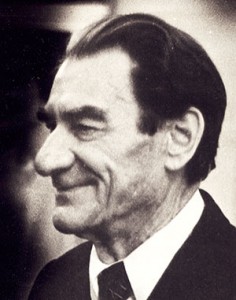 Well-known Moscow composer, concert pianist. Descended from the dynasty of musicians. His father – composer, pianist and pedagogue K.R. Eiges, and his uncle I.R. Eiges – pianist and literature expert, – graduated from the Moscow Conservatory. His brother, Sergey Eiges, was an artist.
Well-known Moscow composer, concert pianist. Descended from the dynasty of musicians. His father – composer, pianist and pedagogue K.R. Eiges, and his uncle I.R. Eiges – pianist and literature expert, – graduated from the Moscow Conservatory. His brother, Sergey Eiges, was an artist.
O.K. Eiges studied at the Music College named after A. Yaroshevsky. Upon graduation in 1925 started performing as a solo pianist. Practiced under E. Petri in Germany. In 1930 got an external degree at the Moscow Conservatory, during the years of studies took private lessons from A.N. Alexandrov, V.Ya. Shebalin, G.I. Litinsky, N.S. Zhilyaev. Afterwards worked in the fit-up theatre “Khudozhestvenny Skaz”, visited Urals with the theatre. In 1935-1939 studied in Moscow for his PhD. under A.N. Alexandrov, uoin completion of studies worked at Sverdlovsk Conservatory, gave many concerts.
In 1948, esthetic positions of O.K. Eiges as a composer and a pedagogue have been exposed to ideologically prejudiced condemnation. He had to leave the conservatory and move from Urals together with the family. Later on O.K. Eiges worked in Gorkov (nowadays of Nizhny Novgorod) conservatory, and since 1958 – at the Institute (RAM) named after Gnesins.
Author of multiple compositions, mainly of a large scale – opera “Anastasis” (based on the novel by L.N. Tolstoy), 15 symphonies, concerts, sonatas, etc. Among his compositions are sonatas for violin, piano, string quartet, ballads, etudes, romances to the poems of A. Pushkin and M. Lermontov, adaptations of the Russian folk songs. Piano had a special place in his art. Piano compositions are distinct in their unique harmonious language, textured thematic, bright characters depiction. O.K. Eiges’ piano style was influenced by works of great composers-pianists – starting from W.A. Mozart and L.V. Beethoven and up to A. Skryabin and S. Prokofyev. Got acquainted with A.D. Tikhomirov at the end of 1970-s. Devoted his “Etude number 1” from “Five Etudes” cycle to A.D. Tikhomirov.
The text is comprised using the materials of the book “Ural State Conservatory named after M.P. Musorgsky. 75 years of history”, an article by E. Golubeva (O. Eiges. Piano compositions. Moscow, Muzyka, 1980) and materials from A.D. Tikhomirov’s family archive.




